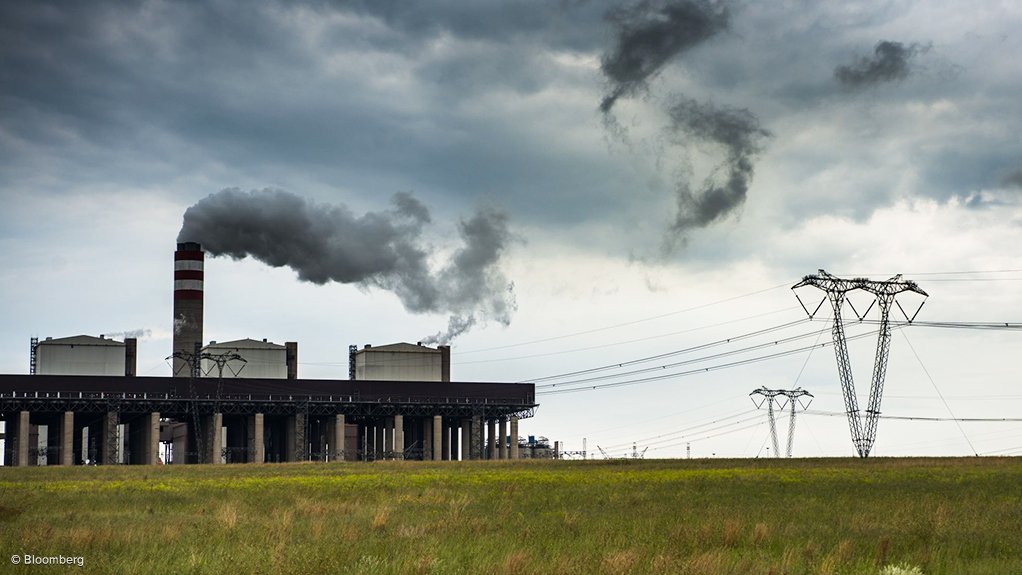South Africa will provide a new timeline for the shutdown of coal-fired power plants in a bid to secure about $2.5-billion in climate finance, an agency in President Cyril Ramaphosa’s office said.
The timetable to be proposed to the Climate Investment Funds (CIF) in June aims to ensure the country remains on track to obtain funding under the so-called Just Energy Transition Partnership (JETP) — a $9.3-billion pact with some of the world’s richest nations. Under the agreement, first announced in 2021, South Africa will receive the assistance on condition it cuts its dependence on coal, which accounts for four-fifths of the nation’s electricity output.
Early last year, South Africa told its partners in the pact it planned to delay the planned shutdown of coal-fired plants — 14 of which are operated by state utility Eskom — to address record electricity outages. The authorities didn’t set new closure dates.
“What we are presenting to the CIF is an adjustment to the decommissioning plan linked to an emissions target that we have to achieve,” said Neil Cole, a finance manager at the Project Management Unit, which is overseeing the JETP for South Africa, within the presidency.
If the proposal is accepted, South Africa will secure $500-million of 10- to 30-year loans with an interest rate of less than 1% and a grace period of eight years from the World Bank-affiliated CIF, Cole said in an interview. That will “derisk” concessional loans planned by multilateral development groups such as the International Bank for Reconstruction and Development, which has pledged $570-million. The African Development Bank has allocated $255-million and the International Finance Corp. $70-million.
“We need to unlock the $500-million for the MDBs to take any kind of interest,” he said.
A further $300-million will come from South African development agencies such as the Industrial Development Corp. and the Development Bank of Southern Africa, while $875-million is expected come from private institutions, Cole said.
The funding is part of the JETP, under which France, the US, UK, Germany and the European Union initially agreed to contribute funds to South Africa, with the Netherlands and Denmark joining the pact later. South Africa has communicated its plans to its JET partners.
Revised Schedule
South Africa will propose that it close Eskom’s Camden, Grootvlei and Hendrina power plants between 2027 and 2030, instead of a prior schedule of 2023 to 2027. In addition, in order to meet an annual emission-reduction target of 50-million to 71-million tons of carbon dioxide equivalent required by the CIF, the presidency is in talks with Eskom to close a number of units at other power plants. That number has yet to be decided. Eskom didn’t respond to a request for comment.
“We hope to have that data” by June, Cole said. It will be a “comprehensive shutting down. They won’t be brought back into production,” he said.
The proposal will be considered under the CIF’s Accelerating Coal Transition Investment Program.
Carbon dioxide, which is generated by burning fossil fuels, and a number of other so-called greenhouse gases are responsible for global warming.
Once the CIF hurdle has been cleared, it will be decided which South African entities will borrow the money.
Grid Upgrade
Money used to decommission coal plants and re-purpose them for the production of renewable energy may be borrowed by Eskom, while the National Treasury may borrow funds to to create alternative employment and economic activity in coal-dependent communities.
Some of the money will also be directed to improve the efficiency of municipal grids and to allow them to accept more renewable energy. If those funds are borrowed directly by the municipalities, the National Treasury will need to provide a sovereign guarantee, Cole said.
While South Africa’s electricity cuts have eased — a result of better performance by Eskom and the increased use of privately owned solar panels — the JETP has attracted criticism from government ministers and labor unions. They argue the pact will exacerbate outages and cost tens of thousands of coal-mine and power-plant jobs.
“The aim is to strengthen the energy sector so that South Africa can comply with the agreed emissions pathway and shut down coal-fired power plants,” the German Development Ministry said in a response to questions.
EMAIL THIS ARTICLE SAVE THIS ARTICLE
To subscribe email subscriptions@creamermedia.co.za or click here
To advertise email advertising@creamermedia.co.za or click here











